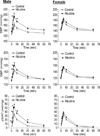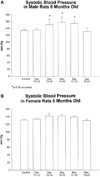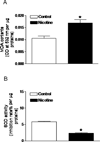Fetal programming and cardiovascular pathology
- PMID: 25880521
- PMCID: PMC4772789
- DOI: 10.1002/cphy.c140036
Fetal programming and cardiovascular pathology
Abstract
Low birth weight serves as a crude proxy for impaired growth during fetal life and indicates a failure for the fetus to achieve its full growth potential. Low birth weight can occur in response to numerous etiologies that include complications during pregnancy, poor prenatal care, parental smoking, maternal alcohol consumption, or stress. Numerous epidemiological and experimental studies demonstrate that birth weight is inversely associated with blood pressure and coronary heart disease. Sex and age impact the developmental programming of hypertension. In addition, impaired growth during fetal life also programs enhanced vulnerability to a secondary insult. Macrosomia, which occurs in response to maternal obesity, diabetes, and excessive weight gain during gestation, is also associated with increased cardiovascular risk. Yet, the exact mechanisms that permanently change the structure, physiology, and endocrine health of an individual across their lifespan following altered growth during fetal life are not entirely clear. Transmission of increased risk from one generation to the next in the absence of an additional prenatal insult indicates an important role for epigenetic processes. Experimental studies also indicate that the sympathetic nervous system, the renin angiotensin system, increased production of oxidative stress, and increased endothelin play an important role in the developmental programming of blood pressure in later life. Thus, this review will highlight how adverse influences during fetal life and early development program an increased risk for cardiovascular disease including high blood pressure and provide an overview of the underlying mechanisms that contribute to the fetal origins of cardiovascular pathology.
© 2015 American Physiological Society.
Figures























References
-
- Aceti A, Santhakumaran S, Logan KM, Philipps LH, Prior E, Gale C, Hyde MJ, Modi N. The diabetic pregnancy and offspring blood pressure in childhood: a systematic review and meta-analysis. Diabetologia. 2012;55:3114–3127. - PubMed
-
- Alexander BT. Placental insufficiency leads to development of hypertension in growth-restricted offspring. Hypertension. 2003;41:457–462. - PubMed
-
- Alexander BT, Hendon AE, Ferril G, Dwyer TM. Renal denervation abolishes hypertension in low-birth-weight offspring from pregnant rats with reduced uterine perfusion. Hypertension. 2005;45:754–758. - PubMed
-
- American College of Obstetricians and Gynecologists. Task Force on Hypertension in Pregnancy. Hypertension in pregnancy. Report of the American College of Obstetricians and Gynecologists’ Task Force on Hypertension in Pregnancy. Obstet Gynecol. 2013;122:1122–1131. - PubMed
FURTHER READING
-
- Lillycrop KA, Burdge GC. Epigenetic mechanisms linking early nutrition to long term health. Best Pract Res Clin Endocrinol Metab. 2012;26:667–676. - PubMed
-
- Luyckx VA, Bertram JF, Brenner BM, Fall C, Hoy WE, Ozanne SE, Vikse BE. Effect of fetal and child health on kidney development and long-term risk of hypertension and kidney disease. Lancet. 2013;382:273–283. - PubMed
Publication types
MeSH terms
Grants and funding
LinkOut - more resources
Full Text Sources
Other Literature Sources
Medical

